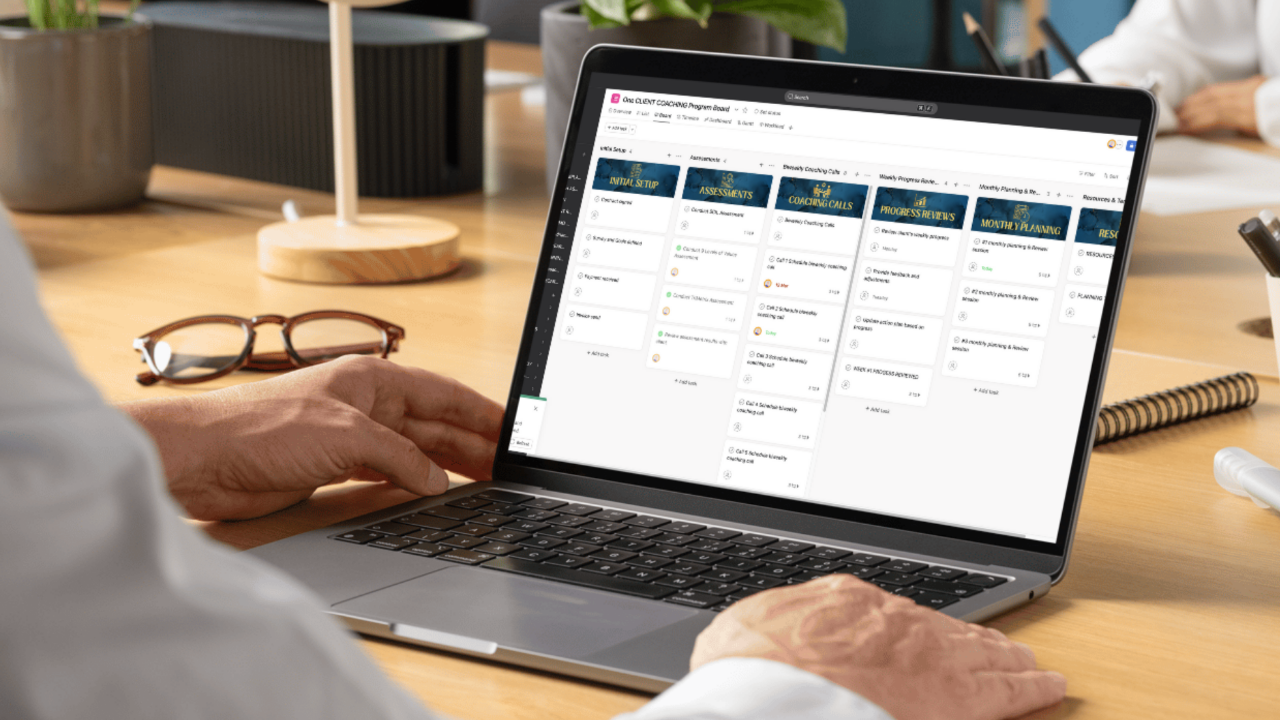How to use Asana for 90 day Goal planning

Feeling overwhelmed by managing multiple projects, running a business, or creating online courses? Trust me, I’ve been there. As a former corporate trainer turned entrepreneur, I was juggling all these responsibilities and needed something to help me stay organized. I tried everything—from Monday.com to Notion to Trello—but I was looking for a tool that was visual like Trello, had the robust features of Monday.com, and was free. That's when I found Asana.
I fell in love with how simple and powerful it is, especially when it comes to managing my tasks visually. Whether it’s planning out my 90-day goals, managing client projects, or running marketing campaigns, Asana gives me the clarity I need to keep everything in check. And while I’m a sucker for new tools, I’ve stuck with Asana because it just works. In this post, I’ll show you how I use Asana to plan out my tasks in 90-day cycles and manage my projects using sprints.
Why I Chose Asana to Stay Organized
When you're running multiple projects, staying organized is key. I was looking for a tool that could help me keep track of all my priorities without overwhelming me. That's where sprints and 90-day planning come in. By breaking big projects into smaller, manageable tasks and planning out your work over 90 days, you can avoid feeling scattered and make steady progress on your goals.
How I Use 90-Day Planning in Asana
The 90-day planning method helps you focus on key priorities over the next three months. Here’s how I set mine up in Asana:
Step 1: Create a 90-Day Project Board
In Asana, I create a 90-Day Project Board to map out my goals for the next three months. Each column represents a different week, so I can break down my long-term goals into weekly tasks. Here's how you can do it too:
- Create a New Project: Open Asana, click the "+" button, and select Board view.
- Set Up Columns: I create 13 columns, each representing a week over the next 90 days.
- Add Key Priorities: For each week, I add cards (tasks) for my key priorities. For example, in the first week, I might focus on marketing tasks like setting up email campaigns, while in the second week, I focus on product development.
Step 2: Weekly Task Breakdown
After setting up the 90-day goals, I break them down into specific weekly tasks. For example:
- Week 1: Focus on completing market research and finalizing my course content.
- Week 2: Set up email marketing campaigns and run ads for my course launch.
- Week 3: Develop a social media content plan and record videos for my online course.
This approach helps me see exactly what needs to be done every week and keeps me on track for the entire 90 days.
Why Sprints Make Projects Easier
In addition to 90-day planning, I use sprints to manage short-term projects. A sprint is a time-boxed period, typically two to four weeks, where you focus on a specific set of tasks. For example, if I’m launching a new course, I’ll break the work down into sprints and use Asana’s board view to track the progress.
Here’s how I use sprints in Asana:
- Backlog: This is where I put all the tasks that need to be completed. Think of it like a brain dump. In Asana, I create a separate Product Backlog board to store all the ideas and tasks I’ll eventually work on.
- Sprint Planning: From the backlog, I select the most important tasks for the upcoming sprint and move them to a Sprint Backlog. This gives me a clear focus for the next two weeks.
- Track Progress: As I work on tasks, I move them through the columns from “To-Do” to “In Progress” to “Done” to visualize my progress.
For example, if I’m working on launching a course, my sprint might focus on creating the course outline, recording videos, and setting up the sales page.
Example of 90-Day Planning for a Course Launch
Let me show you an example of how I would use a 90-day plan in Asana for launching an online course:
Week 1-4: Course Creation
- Create course outline: Task includes researching content and structuring the course flow.
- Record videos: Break this into smaller tasks for each module.
- Design course materials: Develop worksheets, slides, and handouts.
Week 5-8: Marketing and Launch Prep
- Set up email marketing funnel: Create and schedule email sequences.
- Develop social media content: Plan and design posts to promote the course.
- Set up sales page: Create a landing page with course details and payment options.
Week 9-12: Course Launch and Promotion
- Launch the course: Open enrollment and send email blasts.
- Run ads: Launch paid advertising campaigns to promote the course.
- Host webinars: Run live or recorded webinars to engage with potential students.
By the end of the 90 days, I’ve completed the entire course creation, launch, and promotional plan—and all of it is tracked neatly in Asana.
Why I Stick with Asana
I’ve tried other tools like Monday.com, Trello, and Notion, but Asana strikes the perfect balance between functionality and simplicity. It gives me all the features I need to stay organized, plus the ability to visually track everything, whether I’m on my laptop or using the mobile app on the go.
Even with the free version, I can manage my entire 90-day plan, run sprints, and keep all my tasks in one place. The best part? It’s easy to collaborate with my team and stay on top of what needs to be done.
Ready to Take Your Goal Setting to the Next Level?
If you’re serious about mastering your projects and hitting your goals, I invite you to jget my 90-Day Goal Setting Board for Asana and Board Covers that you can customize.
Get your template click here:
In this board , you’l can us to
- Set clear, actionable goals for the next 90 days.
- Break them down into manageable tasks using Asana.
- Stay focused and on track with weekly and daily planning.
- Use sprints to make consistent progress without feeling overwhelmed.
What's Included:
- 90-Day Asana Board Template: Easily organize tasks and deadlines.
- Customizable Canva Cover Templates: Personalize to fit your brand and style using Canva’s free version.
- Downloadable PNG Images: Enhance your Asana board with visual templates.
Why You'll Love It:
- Simple to Use: Just download, customize, and get organized quickly.
- Fully Customizable: Edit Canva templates with your own colors and branding.
- No Extra Cost: Works seamlessly with free versions of Canva and Asana.
Get your template click here:
By integrating Asana with a solid 90-day planning framework, you’ll be able to accomplish more in less time. This 90 day Board is your guide to making that happen.
Get your template click here:
Let’s make the next 90 days your most productive yet!






